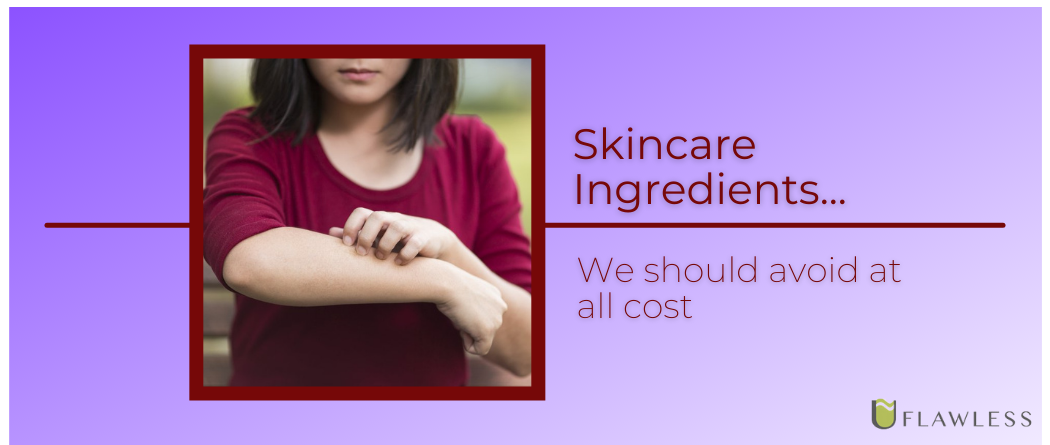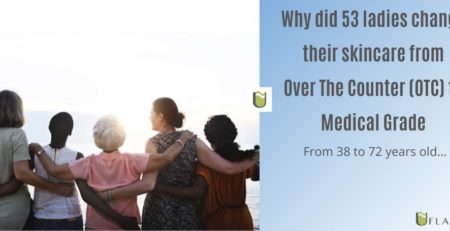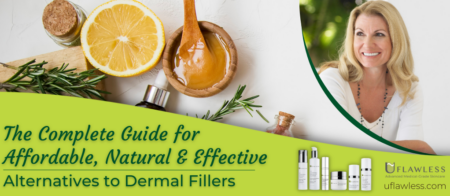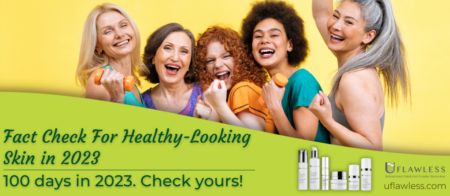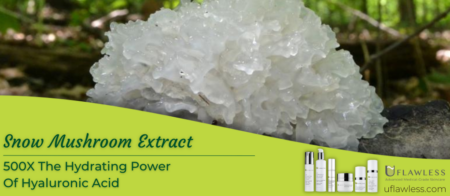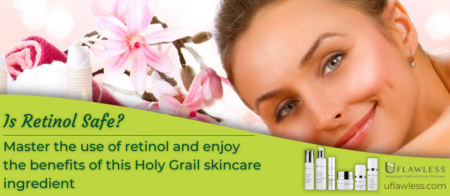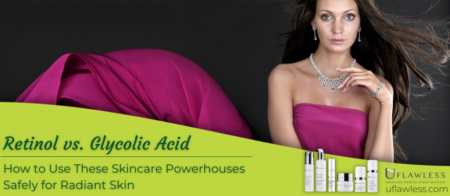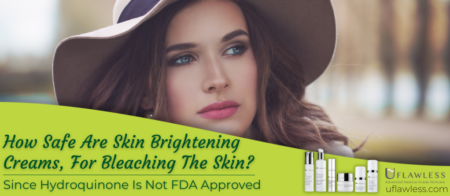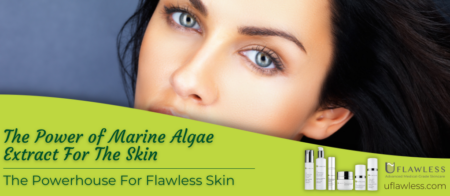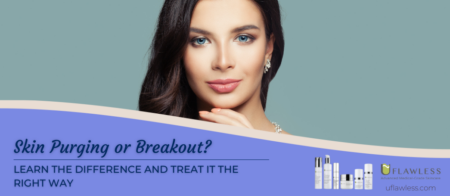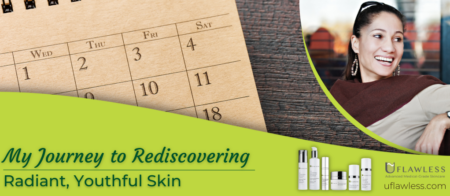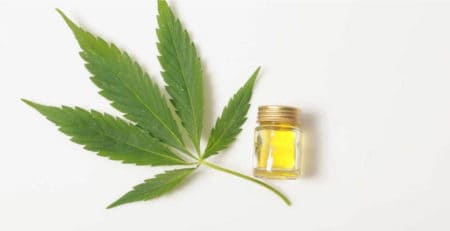The Skincare Ingredients We Should Never Use
We always talk about the best Ingredients that make UFlawless. But there are many skincare ingredients we should never use, and for that reason, are not welcome in our routine.
Not necessarily the ingredients we are presenting here are totally harmful to our skin. Otherwise, there were not many companies exploring them. It’s just a matter of preference for each brand to explore.
On the other hand, there is more risk for the following ingredients to cause an allergic reaction to our skin.
Another critical factor is that we should know what we are putting on our skin and also be able to compare products and brands.
Some of the ingredients are considered comedogenic, meaning that may cause acne, for example.

Why You Should Avoid Paraben on the skin?
If you see Paraben in any skincare product, be aware and avoid it at every cost. They are associated with breast cancer as a chemical preservative interfering and unbalancing normal hormonal function.
Unfortunately it is widely used in many skincare products, shampoos, and makeup products.
It’s not difficult to look after products which contain Paraben. The most common names are methylparaben, propylparaben, butylparaben, ethylparaben.
Lanolin Is Not a Good Ingredient to Your Skin
Lanolin Is A Wool Derivative Ingredient. It’s an effective moisturizer or humectant and unfortunately is one of the most common irritants in skincare products. In fact, it’s one of the 24 ingredients that dermatologists routinely perform allergy testing.
An excellent way to check if we are allergic to lanolin is the reaction we have when we use wool. If you feel itchy the minute you put wool in touch with the skin, is the most significant sign. Sensitive skin, usually can’t go with wool.
If you can wear wool without a problem but notice unexplained redness, flakiness, or another possible symptom of a skin rash, you might want to try this at-home version of a dermatologist’s patch test.
It’s fair to say though that many people can wear wool, but are intolerant certain lanolin products.
Another good way to check the skin intolerance to lanolin is choosing one small area, like the inside of the upper arm, or above the crease of the elbow. These areas have a similar skin structure as the face.
If no adverse reaction is noticed, during 5 to 7 days, then lanolin is not a problem.
However, it doesn’t mean that another product isn’t responsible for the issue. Each lanolin product varies in strength and ability to irritate.
Someone with sensitive skin would be wise to do a patch test with each new product before applying it to the skin, especially in the face.
Artificial fragrances are not a good idea for the skin.
Every time you see fragrance in the list of ingredients of a skincare product, there are 2 things:
One is that the chances of being an irritant to the skin is high, specially artificial fragrances.
The other thing that you can have a repulsing reaction to the scent.
Many people are sensitive to strong smells, besides that, they are the leading cause of contact dermatitis aka rashes and allergic reactions.
The best thing to do in these cases is to give preference for zero-fragrance products, or natural fragrances. This last one subject to reaction, however much lower than artificial ones.
Why We Should Avoid Sodium Lauryl Sulfate and Ammonium Lauryl Sulfate
These two products are the most common to cause a list of issues to the skin and should be avoided big time. They are foaming agents in any skincare products, like soaps and cleansers.
Not surprisingly in high-end brands, it create a false perception of glamour on the bubble baths, causing inflamed bottoms.
Both, sodium lauryl sulfate and ammonium lauryl sulfate, can wreak the same havoc when applied to the face. To add insult to injury, they are comedogenic. Can cause acne.
So, one of the best things we can do, besides checking on the list of ingredients and stay away from them.
Due to many complaints, from consumers to these two lauryl in many other brands, some companies switched by a harmless foaming agent, more common nowadays, sodium laureth sulfate.
And it’s incredible how a tweak on the ending word (eth) make all the difference, not causing any harm to the skin.
The So Popular Shea Butter Can Be An Irritant To The Skin
This could sound incredible, but it’s not rare to find people around reporting an allergic reaction to shea-butter.
It’s very common in many natural skincare lines, but unfortunately, it’s not as good as we think it is. It’s a big-time pore-clogger and easily can cause painful breakouts. In some more sensitive skin, aka cystic acne!
Benzoyl Peroxide Which Is Used On Acne Treatment Could Be Bad For You!
That sounds ironic, but it’s true even though many dermatologists instruct patients to be careful with some specific products containing Benzoyl Peroxide.
In contact with the skin, can lead to dry, red and irritated skin.
Some other dermatologists, knowing that could be good for acne treatment, lowered the strength about a half and it worked. Not causing as much dryness as the conventional formulation.
If you decide to use it, be careful that could be too strong for acne treatment. In case deciding on products containing Benzoyl Peroxide, be mindful and discontinue the usage, as soon as noticing any allergic. It should stop immediately.
Oxybenzone usually used in sunscreen is bad for you and the environment
Oxybenzone is widely used in many popular brands of sunscreen. Unfortunately, many people don’t know that it was scientifically proved that it’s an ingredient that disrupts estrogen hormone in women, and testosterone in man.
Besides the fact that studies show that Oxybenzone is toxic for coral reefs, algae, fish, and other ocean life form.
Just to illustrate how toxic it is, one single drop in the ocean may contaminate 4 million gallons of water.
It’s so critical that many cities in the US, such as Key West in Florida, are considered a ban ingredient.
Countries such as Palau in the middle of the Pacific Ocean, and Aruba, are countries that already banned this ingredient or sunscreen that have it.
What About Botanicals? What Are the Ones That Could Be Harmful To The Skin?
Although they smell very nice and natural, doesn’t mean they can’t cause any harm. Usually, skincare products that contain five or more botanicals, it’s an adventure into the woods.
That means that the chances to have an allergic reaction are higher than using concentrations on fewer ingredients.
The suggestion in cases of choosing skincare loaded with botanicals is to get the ones with less than five. Everything up to three is fantastic. Read the labels carefully and test them for five to seven days to check for any abnormality.
There’s no direct relation between being allergic to a specific herb and not getting the benefits from it. A person could be allergic to ragweed, for example, but still, get the benefits from it.
Usually, the allergic reactions, if any, are pretty mild. Sometimes a runny nose, itchy skin or eyes, rashes or hives.
What To Do When Facing A Skin Allergic Reaction On Face
Having a skin allergic reaction on the face or any part of the body is not a fun experience, and sometimes unavoidable.
But knowing what to do, is the best thing to do. It can avoid many other issues and also that things get worse.
Let’s have a quick look at natural quick responder actions to take.
Cool down The Allergic Reaction
Gently rub the rashy area, with an ice cube to reduce inflammation and also numb the skin. Reducing the amount of blood circulation on the outermost of the skin, due to the ice cube, is a way to reduce the discomfort.
Topical Antihistamines
It helps to block the response of the skin, relieve hives and itching. This is a good and fast relief if you are ok with chemicals on the skin.
Stop using any product on the Skin.
That means any creams, moisturizers, serum. Anything that could affect the skin, until you can identify what is the ingredient responsible for the allergic reaction. A super gentle natural cleanser would be good to keep the skin free of inflammatory agents and have time to heal.
Giving the skin a break
The skin takes some time to heal and recover from allergic reactions, after suspending all the chemicals on it.
Usually, three to five days are more than enough to feel the recovery. If nothing happens, could be something more serious. Then go to see your dermatologist. That is always a good call.
Enjoy the day everybody!


